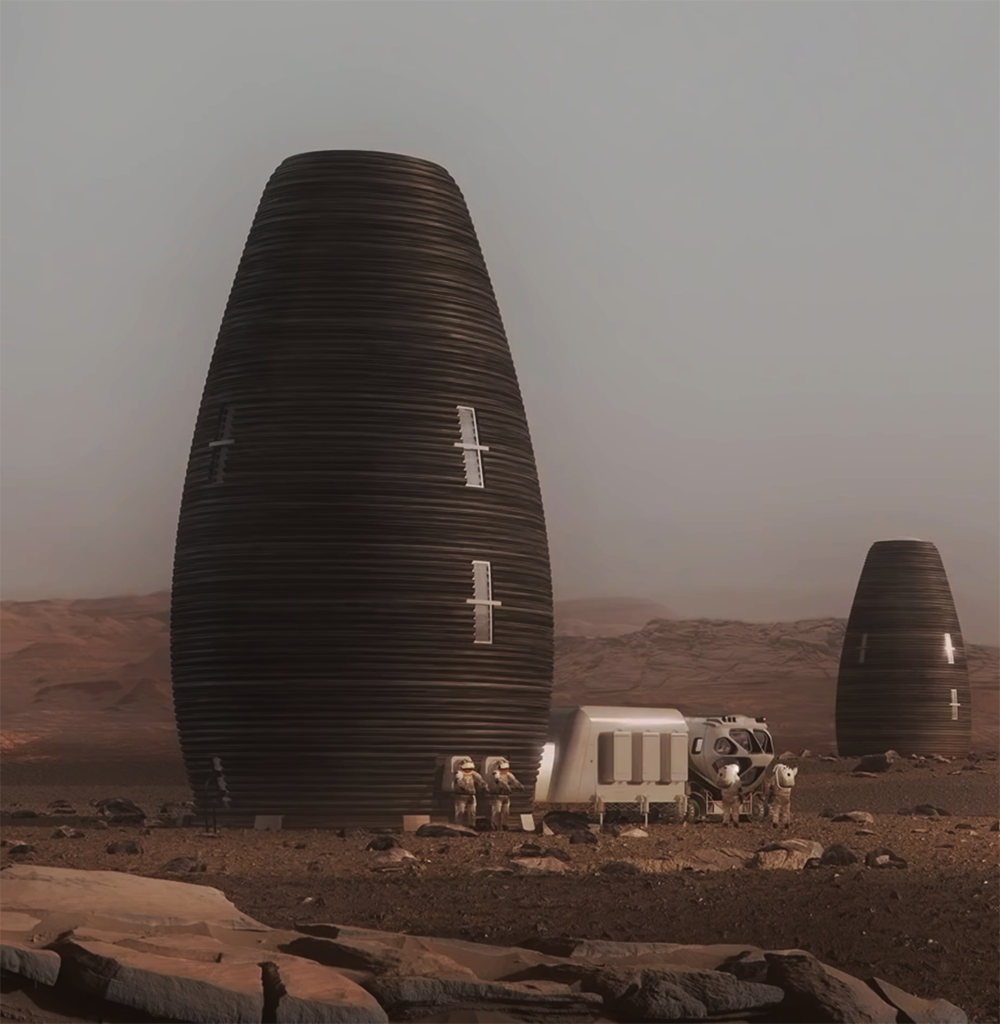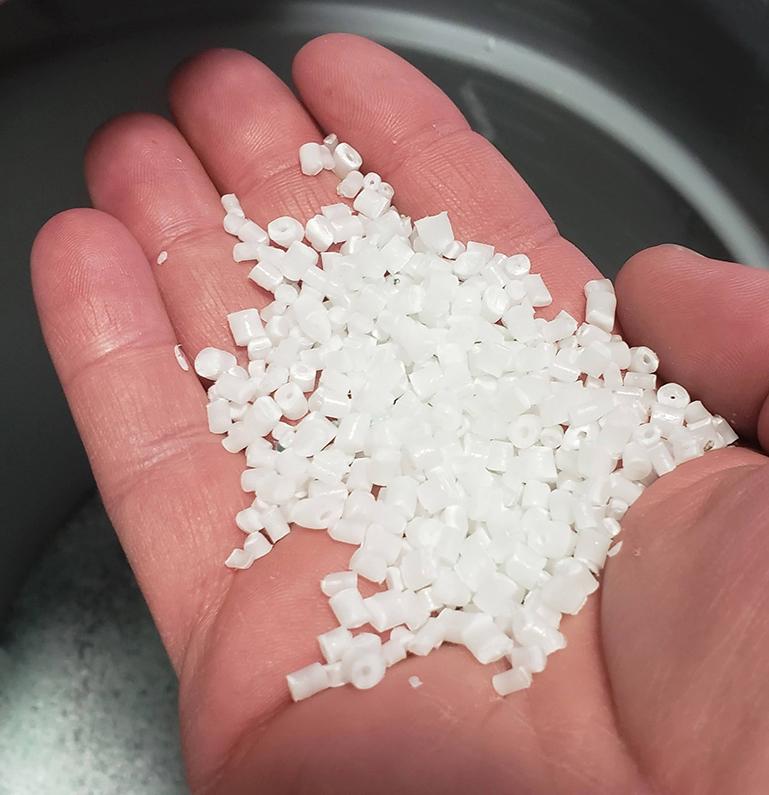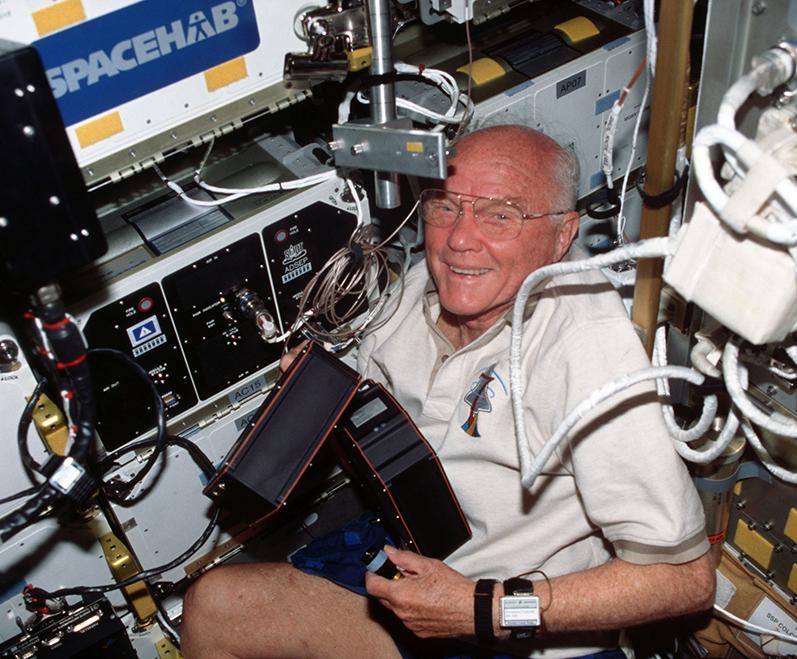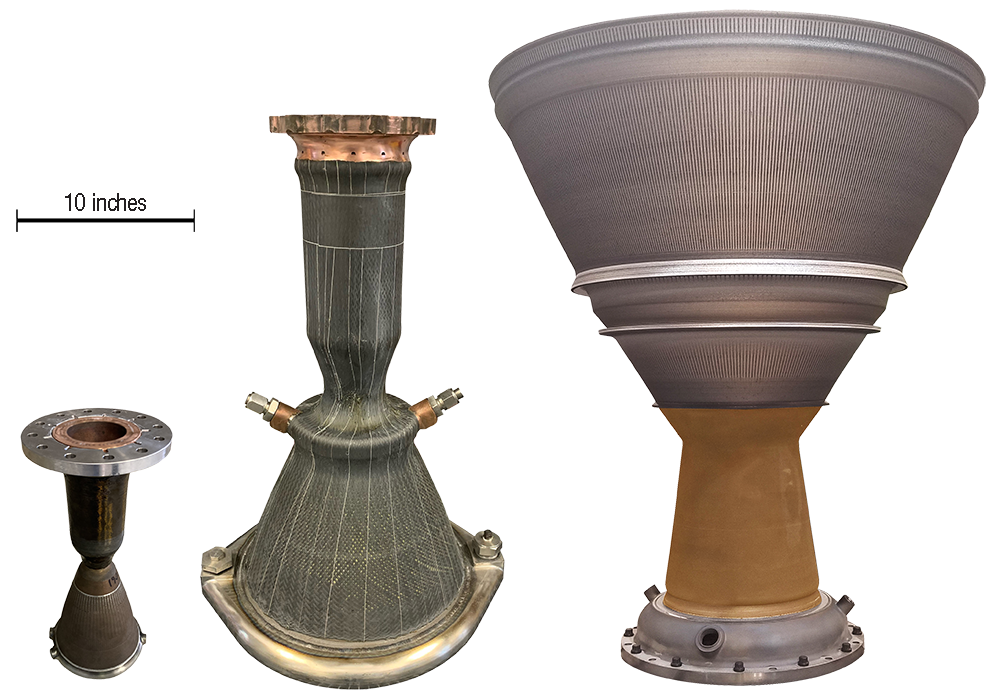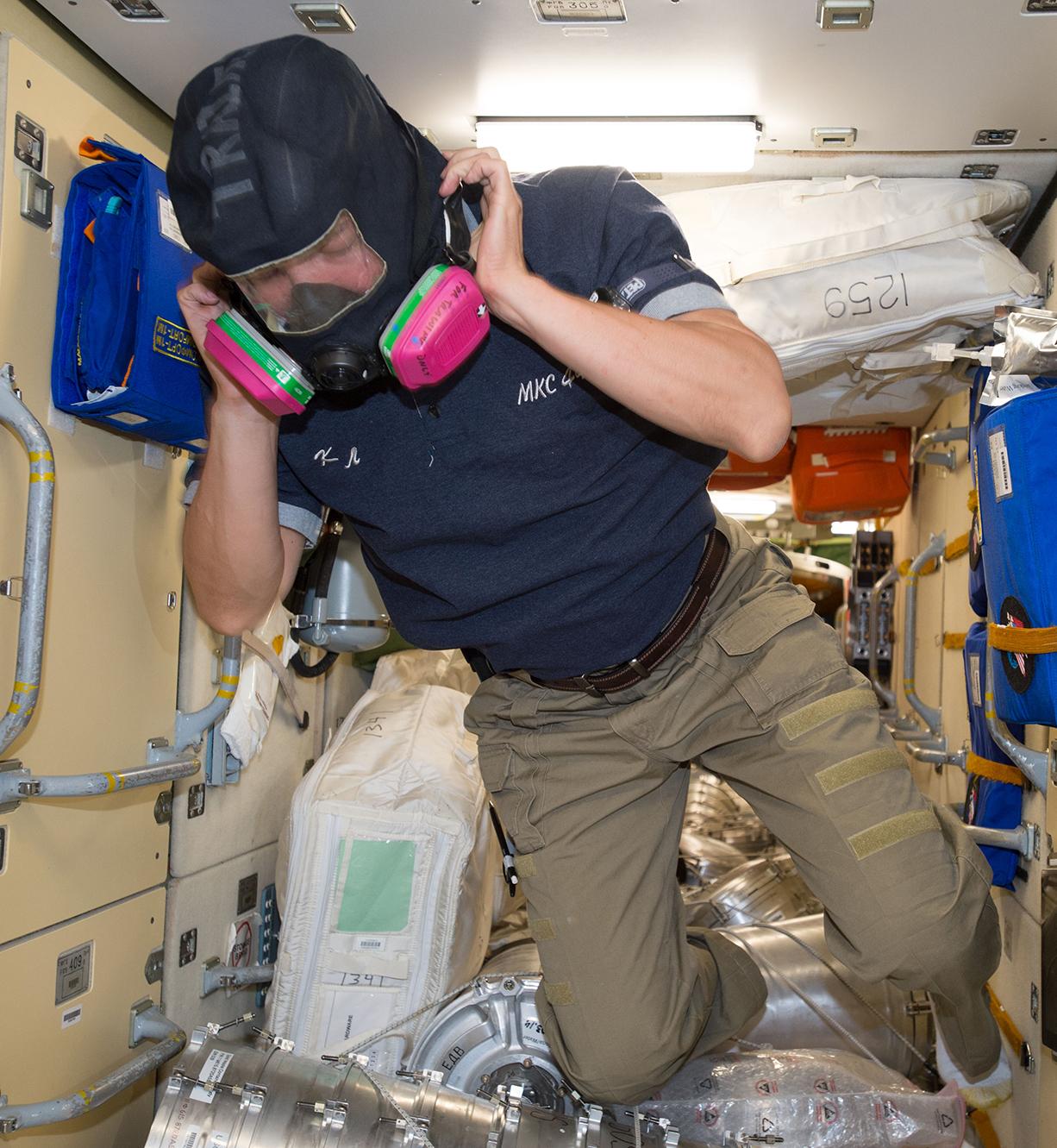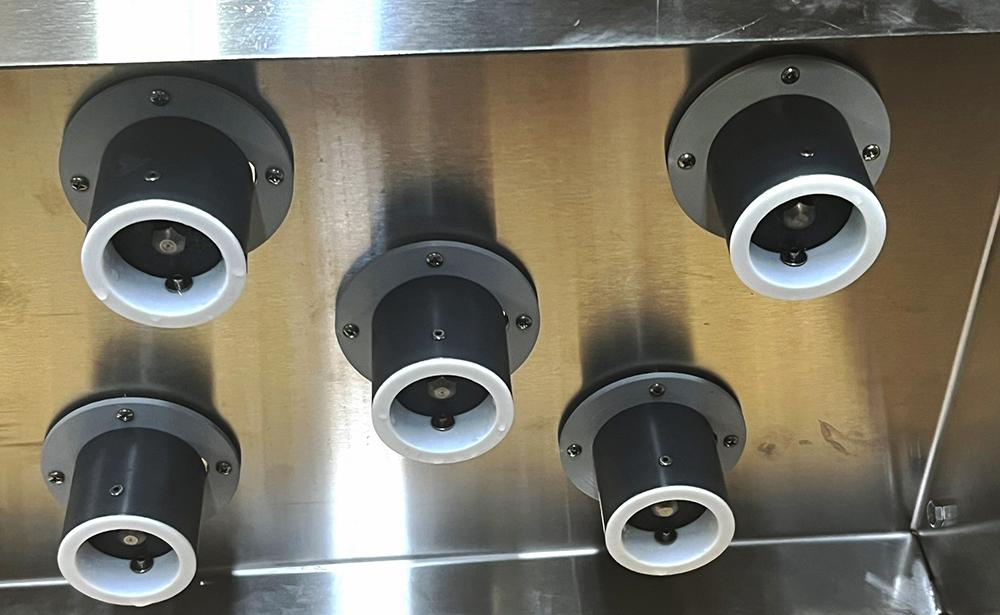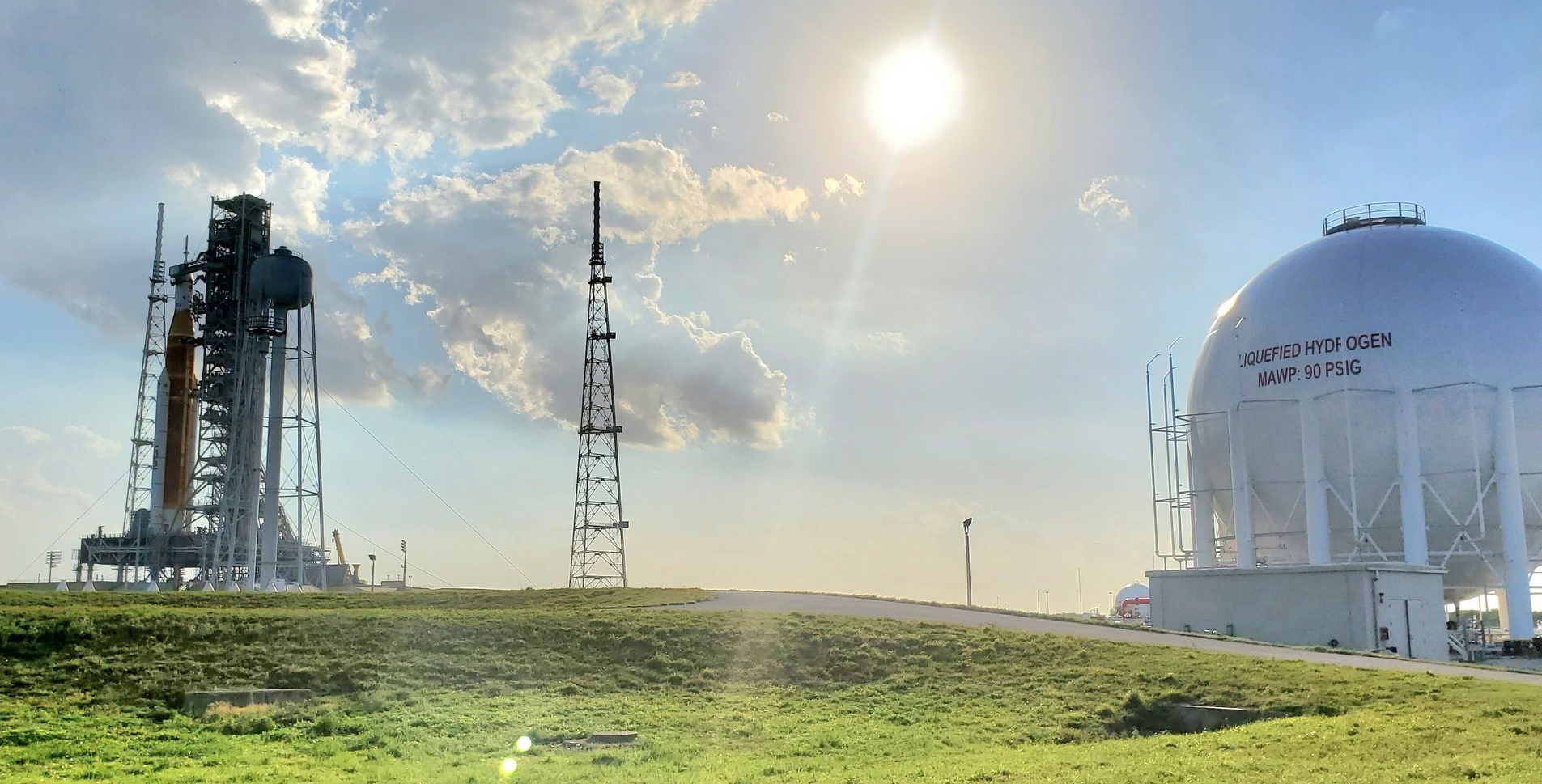
NASA Hydrogen History Informs World’s Hydrogen Future
Subheadline
World’s largest liquid hydrogen tank is a model for much bigger things to come
The biggest liquid hydrogen tank in the world, a sphere 83 feet in diameter, sits at NASA’s Kennedy Space Center in Florida, at the historic Launch Complex 39B, where it was completed in 2022. The previous record-holder is just a few hundred feet away. That tank, which has about two-thirds the capacity of the new addition, was built in the 1960s to support the Apollo launches.
“NASA was the largest user of liquid hydrogen in the world for many decades,” said Adam Swanger, principal investigator at Kennedy’s Cryogenics Test Laboratory. “Rockets have historically been a huge user of liquid hydrogen, but in the big scheme of things, that is a very small, niche application.”
There simply hasn’t been much of a market for hydrogen, especially in its cryogenic liquid form. That may be about to change, and the new tank at Kennedy is helping to pave the way toward a future where this most environmentally friendly of fuels plays a much larger role.
Both cryogenic tanks at 39B were built by CB&I, formerly known as Chicago Bridge & Iron Company, headquartered in The Woodlands, Texas. According to the company, lessons learned and techniques developed during this last job — and over its decades of work with NASA — will help it build even larger tanks.
Liquid hydrogen is NASA’s preferred rocket fuel, and the new tank, together with the old one, will give the agency the capacity not only to accommodate the larger fuel requirements of its new SLS (Space Launch System) heavy-lift rocket but also to carry out more back-to-back launch attempts. Launches are often delayed, or “scrubbed,” due to weather or other circumstances, and a lot of hydrogen is lost as it’s transferred from the rocket fuel tank back to storage after a scrub.
Meeting the Challenges of Scaling Up
Liquid hydrogen is difficult to handle at any scale. With a boiling point of minus 423°F — so cold it will freeze solid any gas it comes in contact with except for helium — it must be thoroughly insulated from the ambient environment. To achieve this, most liquid hydrogen storage tanks employ vacuum insulation within the walls, which makes pressure an issue, especially in a larger tank.
“Just building a sphere inside a sphere is challenging,” said Mark Butts, CEO of CB&I, noting that the size of this tank required the company to build both the inner and outer sphere simultaneously on site. “We had to develop an innovative construction sequence.”
Then, once the space between the inner and outer walls was filled with insulation, which had to be completely dry, all the air had to be drawn out of it, which was a lengthy process. The pressure differential caused by the vacuum can require steel so thick — especially in such a large tank — that it would require heat treatment to relieve welding stress, which Butts said would have been impractical in a double sphere with stainless steel on the inner shell. “We precluded that need by managing steel thicknesses with innovative design techniques,” he said.
This tank is also the first to use a new kind of insulation, which the Cryogenics Test Laboratory at Kennedy validated through extensive testing beginning in the early 2000s. While other vacuum-insulated tanks that are built in the field are insulated with perlite, an expanded volcanic rock best recognized as the white crumbs in potting soil, NASA’s testing revealed that about a 46% reduction in boil-off losses could be achieved by employing a type of tiny glass bubbles normally used as lightweight filler material, not insulation.
Boil-off occurs as some heat inevitably seeps into a tank from the environment, causing the liquid to continuously evaporate into gas that must be vented.
“The glass bubbles were very challenging to work with,” said Butts. “CB&I gained valuable experience working with this new material.”
It’s also the first tank of its kind with a heat exchanger built into its interior, which will allow Kennedy to hook it to a cryogenic refrigeration unit and eliminate boil-off entirely. This is another concept that Swanger and his team proved using a smaller liquid hydrogen tank between 2015 and 2016. The testing found that every dollar spent on electricity for refrigeration saved $7 worth of liquid hydrogen.
Swanger said a NASA analysis of the supply chain for propellant over 30 years of the Space Shuttle Program revealed that about half the liquid hydrogen purchased was lost, through boil-off and other modes. And he noted that hydrogen prices can be volatile, adding to the urgency of controlling losses.
NASA is still figuring out how to refrigerate such a large tank, and the current supply chain for the glass bubbles would make their widespread use in storage tanks a challenge, but Swanger said both these developments have potential to be widely adopted in the future. He likened the refrigeration technology, especially, to the modern refrigerators and freezers that displaced the icebox.
Currently, he said, operators have no direct control over the conditions inside a storage tank and the resulting losses from boil-off. “You just buy some liquid, and you use whatever you use, and you lose what you lose, and you buy more.” Introducing refrigeration, he said, would be “much more than just saving money through zero boil-off. It’s about gaining control, which has a positive ripple effect on the entire enterprise. And that’s why this tank can really set an important precedent for the future of liquid hydrogen storage.”
The Capacity for Change
The new tank can hold about 4,730 cubic meters of liquid hydrogen, but CB&I is now offering commercially the ability to construct liquid hydrogen tanks with capacities up to 40,000 cubic meters, “based on our 60 years of experience, but especially based on this project,” said Butts. “The work at NASA really helped develop and demonstrate some of these large-scale construction techniques.”
Hydrogen is the only fuel that can be produced and consumed without releasing any harmful gases — “an option the universe was not obligated to give us,” Swanger pointed out. “Therefore, we should be eager to capitalize on it.” Governments and companies around the world have begun to invest heavily in technology for hydrogen production, transport, and consumption. Last year the United States announced a $7 billion investment in hydrogen hubs across the country. Kennedy and CB&I are also part of a consortium led by the Shell oil company and partially funded by the U.S. Department of Energy that has set out to demonstrate construction of a tank with a capacity of 100,000 cubic meters of liquid hydrogen, more than 20 times the size of Kennedy’s new tank.
“The whole global effort to decarbonize is presumed to require much higher volumes of hydrogen storage than exist today,” said Butts. Hydrogen can be harvested from water using renewable energy and then used either in fuel cells or by burning it to power turbines. But the best places for generating renewable energy — think solar farms in the desolate, sunbaked Australian interior — are often far from the population centers that need energy. Ships and ports will need the capacity to move and store large quantities in liquid form.
"Will we use some of the things we learned working for NASA? Yes, definitely," said Butts.

Here the heat exchanger is hoisted in the interior of NASA’s new liquid hydrogen tank before the tank’s concentric spheres are completed. It will enable the world’s first integrated refrigeration and storage of liquid hydrogen. Credit: NASA
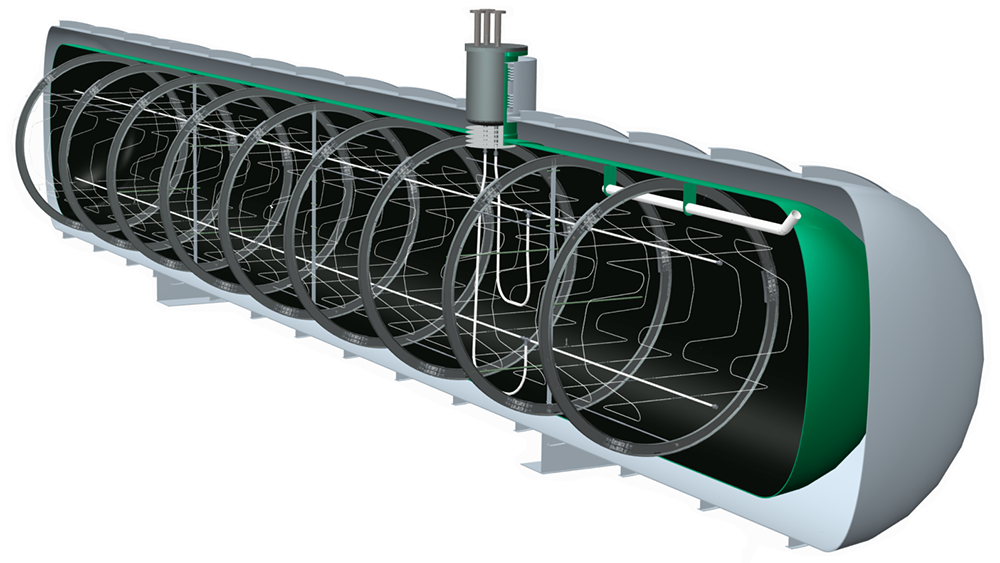
Engineers at Kennedy’s Cryogenics Test Laboratory outfitted a smaller liquid hydrogen tank, seen here, with a heat exchanger to try out the concept of refrigerating such a tank between 2010 and 2015. The tank that was just built at Kennedy’s launch complex will be the first to use the integrated refrigeration and storage concept operationally. Credit: NASA
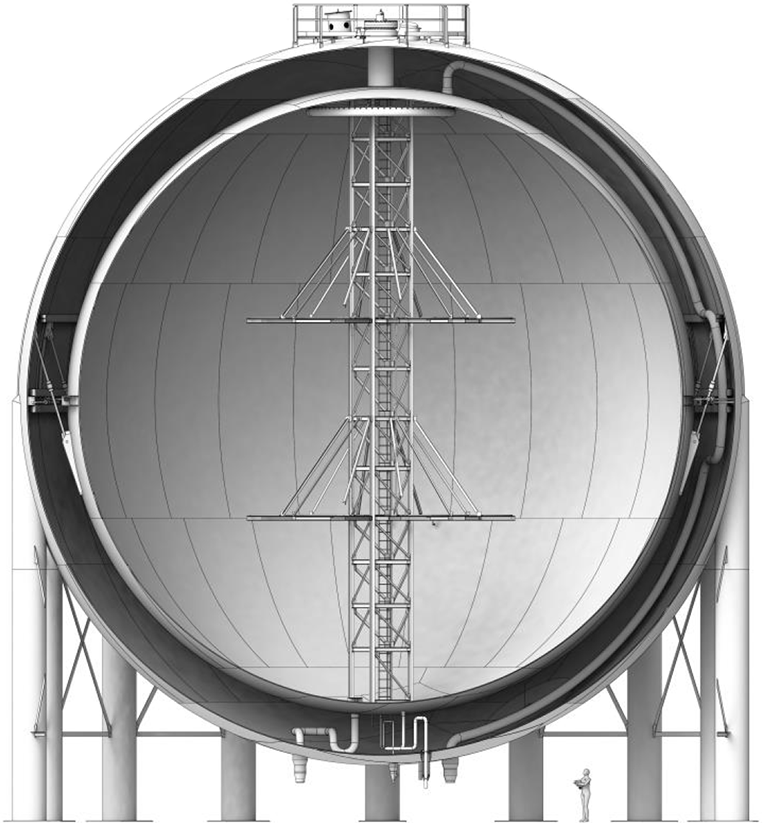
This cutaway shows the interior of Kennedy’s new liquid hydrogen tank, including the vacuum between the inner and outer spheres and the heat exchanger that will pump liquid helium through two horizontal coils suspended from a vertical scaffolding in the middle of the tank. Helium is the only element with a lower boiling point than hydrogen. Credit: NASA

The liquid hydrogen tank CB&I just built, the largest in the world, sits at Kennedy Space Center’s Launch Complex 39B, where it will support launches of NASA’s SLS (Space Launch System), seen here in the background. Since its inception, the space agency has been a leader in hydrogen technology, which was little used outside rocketry. Credit: CB&I





